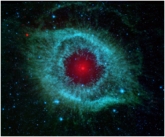
 The Laboratory of Astrospectroscopy of the Laser Centre focuses on the applications of high-resolution spectroscopy for space research:
The Laboratory of Astrospectroscopy of the Laser Centre focuses on the applications of high-resolution spectroscopy for space research:
- chemical composition of stellar atmospheres;
- nucleosynthesis and evolution of Galactic chemical composition;
- radial (Doppler) velocities;
- atoms and molecules in the interstellar and circumstellar environment.
High-resolution spectroscopy is one of the most powerful methods in astrophysics. The methodology concerns the use of stellar spectra, recorded under [very] high spectral resolution, in principle permitting the identifications of all spectral lines. These line profiles are then analyzed with respect to e.g. the varying chemical composition among stars in different stages of evolution. Besides being useful for the scientific goal proper, this methodology appears to be particularly promising in
assuring front-line work also in small research groups: already in a few nights of observing with some internationally accessible teleskopes (e.g. European Southern Observatory or on satellites) much data can be collected, whose analysis can be well pursued with only modest laboratory facilities;
this branch of astrophysics lends itself to collaboration with fields in atomic and molecular physics. The analysis of stellar spectra require extensive laboratory work bacause the number of species for which the spectrum is known accurately enough (line positions, line intensities, and line profiles) is still quite small. Furthermore, the needs of the observing community for laboratory data are continually evolving, particularly as technological developments opens new possibilities.
A significant experience have been gathered by the staff of Laboratory in interpretation of atomic and molecular absorption spectra formed at physical condition typical for cool stars with effective temperatures of ~ 3000 ÷ 5000 K. The standard methods (colours, ionization balance, excitation analysis, etc.) and stellar atmospheric models are used to determine fundamental stellar parameters and abundances. Main scientific results are published in the leading editions of the world: Astronomy & Astrophysics, Monthly Notices of the Royal Astronomical Society, and Astrophysics and Space Science. A fruitful scientific collaboration with N. Copernicus Astronomical Center (Poland), Free University of Brussels (Belgium), Special Astrophysical Observatory (Russia), National Central University (Taiwan) , and University of Aarhus (Denmark).
